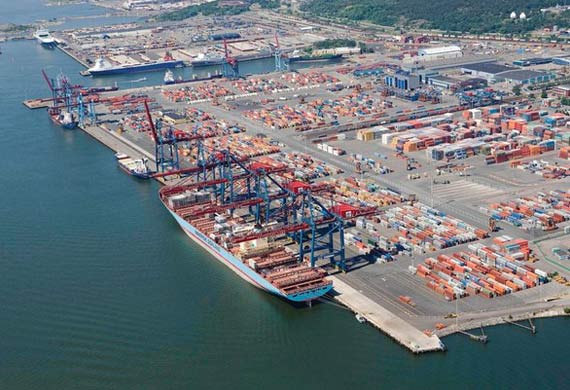
Upturn in container freight at the Port of Gothenburg
SEP 7, 2015: Container freight volumes increased by two percent during the second quarter compared to the corresponding period in 2014. Exports and imports of new cars have also increased. This was revealed in the six-monthly report published today by the Port of Gothenburg. Around 30 percent of Sweden’s imports and exports are shipped via […]

SEP 7, 2015: Container freight volumes increased by two percent during the second quarter compared to the corresponding period in 2014. Exports and imports of new cars have also increased. This was revealed in the six-monthly report published today by the Port of Gothenburg.
Around 30 percent of Sweden’s imports and exports are shipped via the Port of Gothenburg. Shifts in the economy are clearly reflected in the flow of goods that pass through the port.
The Port of Gothenburg is the largest port in Sweden for container traffic, accounting for almost 60 percent of the country’s volumes. The year began with a weak first quarter and a fall of five percent in the number of containers shipped through the port. Volumes recovered during the second quarter, ending two per cent up for the period. Some 418,000 containers passed through the Port of Gothenburg during the first six months of the year.
Magnus Kårestedt, Port of Gothenburg chief executive, said, “The container market has been weak for some time but we could see a distinct improvement during the second quarter. Not a major improvement, but an improvement nevertheless. Things are looking brighter for Swedish foreign trade, a trend that has carried over into the second half of the year.”
Exports and imports of new cars rose by five per cent during the first six months of 2015 compared to the same period last year. The rise can be attributed to a decision taken by Volvo
So-called ro-ro traffic, which involves the transport of freight loaded on trailers and trucks, fell by seven per cent compared to the corresponding period last year, closing at 265,000 units. Ro-ro traffic accounts for a large proportion of intra-European freight transport.
“The fall is a direct result of a downturn in the flow of paper between Sweden and Finland,” explained Magnus Kårestedt.
Passenger traffic remained unchanged compared to the corresponding period in 2014. A total of 769,000 passengers passed through the Port of Gothenburg during the first six months of this year. The vast majority of the passengers travel with Stena Line, which operates daily services to Kiel and Frederikshavn.
Half of all crude oil that enters Sweden does so via the Energy Port in Gothenburg. It is the largest energy port in the Nordic region with several refineries and depot companies that refine and store crude oil into diesel, petrol and other oil-based products.
Oil and energy products have increased by seven per cent. The mid-year figure was 9.8 million tonnes compared to 9.1 million tonnes last year.

